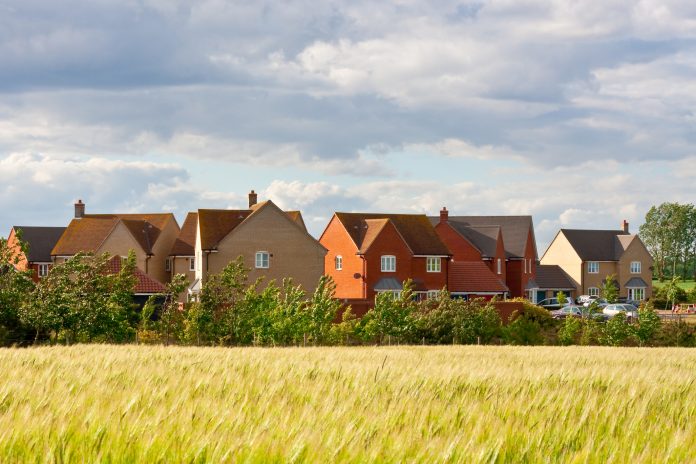Can the government’s much-anticipated planning reforms speed up development while maintaining environmental protections or are we set on a collision course between competing priorities? Christian Drage and Clare Eccles of law firm Bryan Cave Leighton Paisner take a look
While targets to reduce carbon emissions to protect our planet and the natural world are rightly becoming more ambitious, the adjustments needed to human behaviours, expectations and economic ambitions to achieve these targets presents a significant ongoing challenge.
Planning is just one area that must deal with this challenge head-on. On the one hand, the planning system must promote and deliver development to support population and economic growth, but it must do this in such a way that conserves and enhances the natural environment and mitigates adverse impact.
This is difficult and complicated to do, fundamentally because there are so many competing factors weighing in the balance that cross different geographies, environments, economies and cultures and all in a country where space is itself at a premium.
The Planning Bill – An opportunity for collaboration or a source for collision?
In July, housing secretary Robert Jenrick announced that the government’s long-awaited response to the Planning White Paper would not emerge for at least two more months. The Planning Bill will then follow later in the year.
The reforms are principally designed to speed up the planning system and boost development – particularly housing supply. How will these measures affect current environmental protections and obligations? Can these competing interests work collaboratively or is a collision inevitable?
These “once in a generation” (where have we heard that before?!) reforms present an opportunity for the government to address perceived weaknesses in the planning system; but they also present an opportunity to reassess the environmental checks and balances, at a juncture when climate change action is ever-more pressing. This is also on the agenda but how these reforms will be packaged – and, crucially, implemented – is not yet sufficiently clear.
The Planning White Paper acknowledges that the planning system has a central role in combatting climate change, improving biodiversity and supporting sustainable growth in all parts of the country. However, with one of the central reform objectives being to promote and speed up development to support growth, there is a looming potential conflict between this and the country’s legally binding international and national environmental protection obligations. Beyond facilitating improvements in the energy efficiency standards for buildings, detail on how the reforms will strive to satisfy these conflicting goals is vague.
For example, major changes to local plans are proposed to provide greater certainty for development. All land in England will be categorised into “zones”. While details of the categories are not yet confirmed, the Planning White Paper proposed a preference for a three-zone system with land classed as “protected”, for “renewal” or for “growth”.
In protected areas, such as the green belt, Areas of Outstanding Natural Beauty, conservation areas and places at flooding risk, more stringent development controls would be in place, with planning applications assessed on a case-by-case basis.
There would be a presumption in favour of development in “renewal” zones, with planning permission automatically granted to schemes that meet design and other prior approval requirements.
In “growth” zones, outline planning permission would automatically be granted on adoption of the local plan. As such, there might be far less case-by-case planning assessment in certain zones. A number of key environmental groups have recently written to the government concerned that where land is opened up for development in this new way, there may be fewer environmental safeguards governing its development. Hence, the fear of collision.
We understand these concerns; however, in our experience, it is not right to imply or assume that all developers shy away from fair and proportionate environmental protection where protection is needed as a direct result of the additional impact their development creates.
Delivering on biodiversity
Many developers are already embracing the new idea of biodiversity-net-gain (BNG) and corporates take extremely seriously the “E” in environmental, social and governance (ESG) obligations. The more forward-thinking operators in the development market see environmental protection as a positive thing; something to enhance a development and its value in all currencies (social, environmental and economic).
When sustainable drainages systems (SuDS) and green corridors were introduced into masterplanning principles (now a pre-fix in any major new housing scheme), there were shouts of concern and complaint. Now the industry sees them as important components to creating a place where we want to live, work and play – they add value. This is collaboration between the environment and development at its pinnacle.
We do agree, however, that how the automatic granting of planning permission sits with the environmental protection regime needs further clarification. For example, the National Planning Policy Framework’s (NPPF) approach to conserving and enhancing the natural environment provides that decisions should minimise impacts on and provide net gains for biodiversity.
One of the principles outlined in the NPPF is that “if significant harm to biodiversity resulting from a development cannot be avoided (through locating on an alternative site with less harmful impacts), adequately mitigated or, as a last resort, compensated for, then planning permission should be refused”. With unknown site-specific details and development plans at the point in time when local plans are adopted, the automatic granting of planning permission complicates this approach, something which the government will need to resolve.
Similarly, there are questions around the application of the Environmental Impact Assessment regime, particularly in the “growth” zones. Although the Planning White Paper proposes a new approach to environmental assessment and mitigation within the planning system, no detail has yet been provided. It is not clear how planning permission could automatically be granted and environmental impacts considered and mitigated across what could be large areas classified for “growth” using such a broad-brush approach.
Solutions to these issues may well be presented in further consultation promised in the White Paper, specifically on how the domestic and international environmental obligations will be met while taking advantage of opportunities for environmental improvements. It seems, however, that unless there is a holistic approach to the planning reforms and the environmental objectives, there is a risk that a faster planning system could collide with these objectives and obligations.
Just when we start to see glimmers of a new post-pandemic horizon, we face a new journey without a clear strategy for how we are going to get there. Never has planning had such an important role to play in leading our economy and communities to re-energise after Covid-19, so is now really the time to radically change the map? As always, there will be winners and losers. There is also a risk that radical change could lead to inaction at a time when we need urgent action, in the appropriate way.
 Christian Drage
Christian Drage
Partner
Tel: +44 (0) 20 3400 4947
 Clare Eccles
Clare Eccles
Knowledge development lawyer
Tel: +44 (0) 20 3400 4267
Twitter: @BCLPlaw
LinkedIn: Bryan Cave Leighton Paisner












![[VIDEO] GBC network calls for boldness at COP29 Baku, Azerbaijan, where COP29 will take place and where the GBC Network have deirected their message](https://www.pbctoday.co.uk/news/wp-content/uploads/2024/11/iStock-513054348-1-218x150.jpg)

